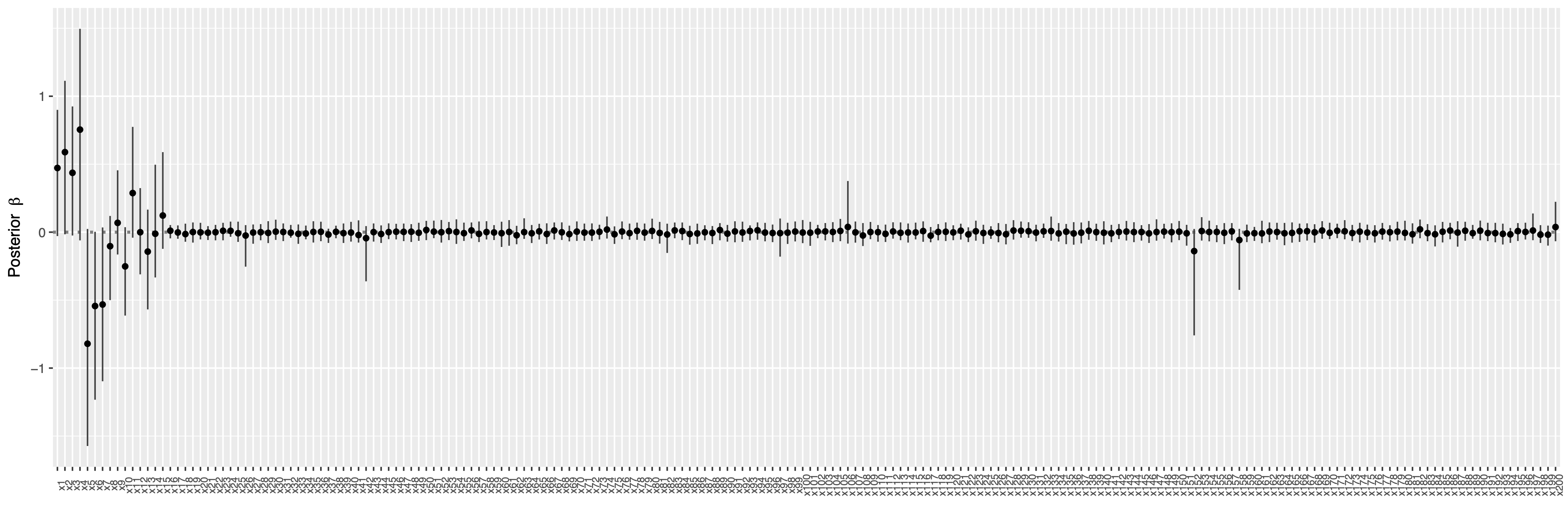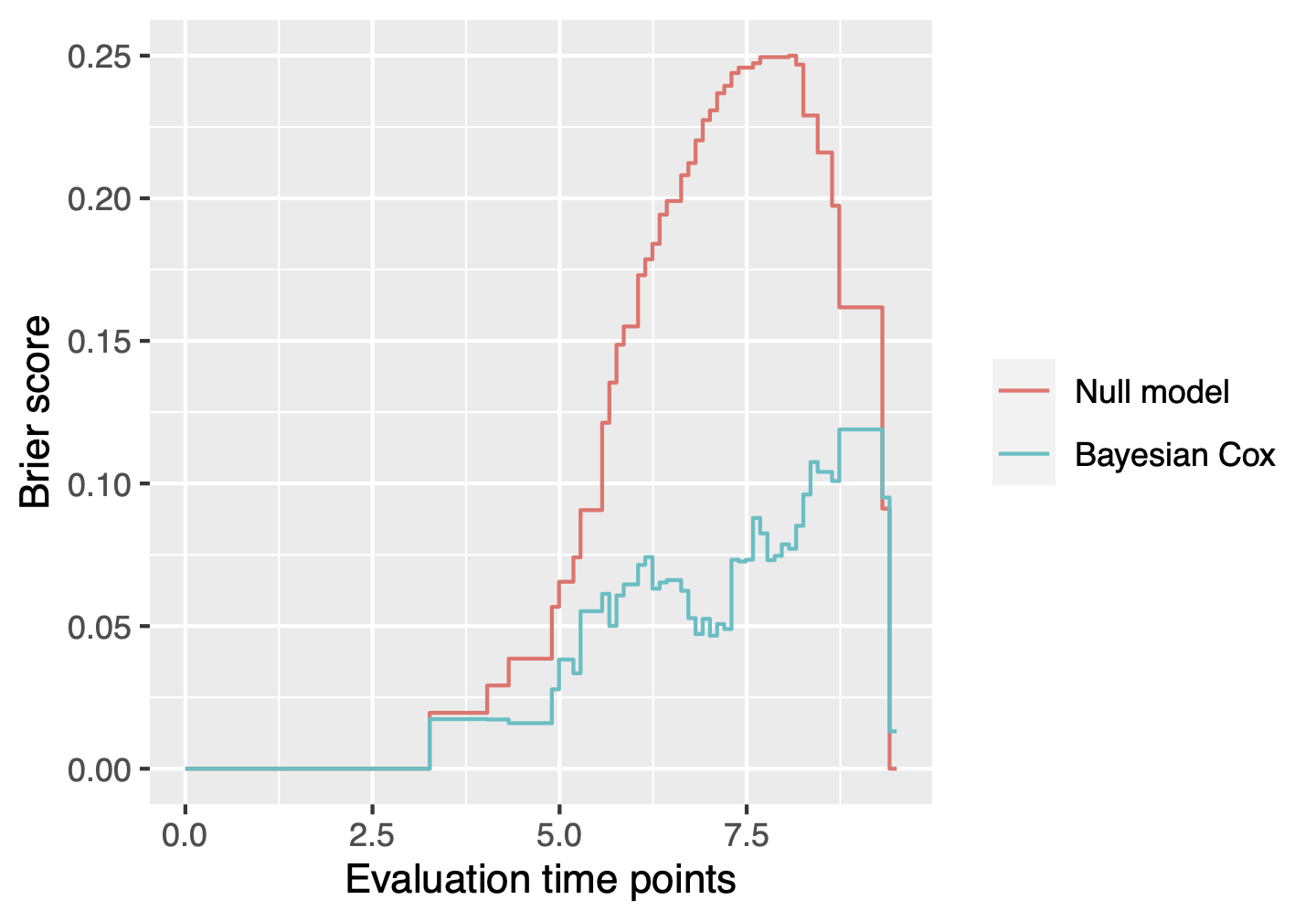
The hardware and bandwidth for this mirror is donated by dogado GmbH, the Webhosting and Full Service-Cloud Provider. Check out our Wordpress Tutorial.
If you wish to report a bug, or if you are interested in having us mirror your free-software or open-source project, please feel free to contact us at mirror[@]dogado.de.
This is a R/Rcpp package BayesSurvive for Bayesian survival models with graph-structured selection priors for sparse identification of high-dimensional features predictive of survival (Madjar et al., 2021) and its extensions with the use of a fixed graph via a Markov Random Field (MRF) prior for capturing known structure of high-dimensional features, e.g. disease-specific pathways from the Kyoto Encyclopedia of Genes and Genomes (KEGG) database.
Install the latest version from CRAN
library("BayesSurvive")
# Load the example dataset
data("simData", package = "BayesSurvive")
dataset = list("X" = simData[[1]]$X,
"t" = simData[[1]]$time,
"di" = simData[[1]]$status)## Initial value: null model without covariates
initial = list("gamma.ini" = rep(0, ncol(dataset$X)))
# Prior parameters
hyperparPooled = list(
"c0" = 2, # prior of baseline hazard
"tau" = 0.0375, # sd (spike) for coefficient prior
"cb" = 20, # sd (slab) for coefficient prior
"pi.ga" = 0.02, # prior variable selection probability for standard Cox models
"a" = -4, # hyperparameter in MRF prior
"b" = 0.1, # hyperparameter in MRF prior
"G" = simData$G # hyperparameter in MRF prior
)
## run Bayesian Cox with graph-structured priors
fit <- BayesSurvive(survObj = dataset, model.type = "Pooled", MRF.G = TRUE,
hyperpar = hyperparPooled, initial = initial, nIter = 100)
## show posterior mean of coefficients and 95% credible intervals
library("GGally")
plot(fit) +
coord_flip() +
theme(axis.text.x = element_text(angle = 90, size = 7))
#plot(fit$output$beta.p[,1], type="l")
#fit$output$beta.margin
#fit$output$gamma.margin
#simData[[1]]$trueB
The function BayesSurvive::plotBrier() can show the time-dependent Brier scores based on posterior mean of coefficients or Bayesian model averaging.

The integrated Brier score (IBS) can be obtained by the function BayesSurvive::predict().
Null.model Bayesian.Cox
IBS 0.09147208 0.03797003The function BayesSurvive::predict() can estimate the survival probabilities and cumulative hazards.
observation times cumhazard survival
1: 1 3.3 1.82e-04 1.00e+00
2: 2 3.3 2.42e-01 7.85e-01
3: 3 3.3 2.93e-06 1.00e+00
4: 4 3.3 5.40e-03 9.95e-01
5: 5 3.3 8.52e-04 9.99e-01
---
9996: 96 9.5 1.38e+01 9.68e-07
9997: 97 9.5 9.71e+01 6.94e-43
9998: 98 9.5 1.35e+00 2.58e-01
9999: 99 9.5 2.24e+00 1.06e-01
10000: 100 9.5 8.62e+00 1.81e-04hyperparPooled <- append(hyperparPooled, list("lambda" = 3, "nu0" = 0.05, "nu1" = 5))
fit2 <- BayesSurvive(survObj = list(dataset), model.type = "Pooled", MRF.G = FALSE,
hyperpar = hyperparPooled, initial = initial, nIter = 10)# specify a fixed joint graph between two subgroups
hyperparPooled$G <- Matrix::bdiag(simData$G, simData$G)
dataset2 <- simData[1:2]
dataset2 <- lapply(dataset2, setNames, c("X", "t", "di", "X.unsc", "trueB"))
fit3 <- BayesSurvive(survObj = dataset2,
hyperpar = hyperparPooled, initial = initial,
model.type="CoxBVSSL", MRF.G = TRUE,
nIter = 10, burnin = 5)fit4 <- BayesSurvive(survObj = dataset2,
hyperpar = hyperparPooled, initial = initial,
model.type="CoxBVSSL", MRF.G = FALSE,
nIter = 3, burnin = 0)Katrin Madjar, Manuela Zucknick, Katja Ickstadt, Jörg Rahnenführer (2021). Combining heterogeneous subgroups with graph‐structured variable selection priors for Cox regression. BMC Bioinformatics, 22(1):586. DOI:10.1186/s12859-021-04483-z.
These binaries (installable software) and packages are in development.
They may not be fully stable and should be used with caution. We make no claims about them.
Health stats visible at Monitor.